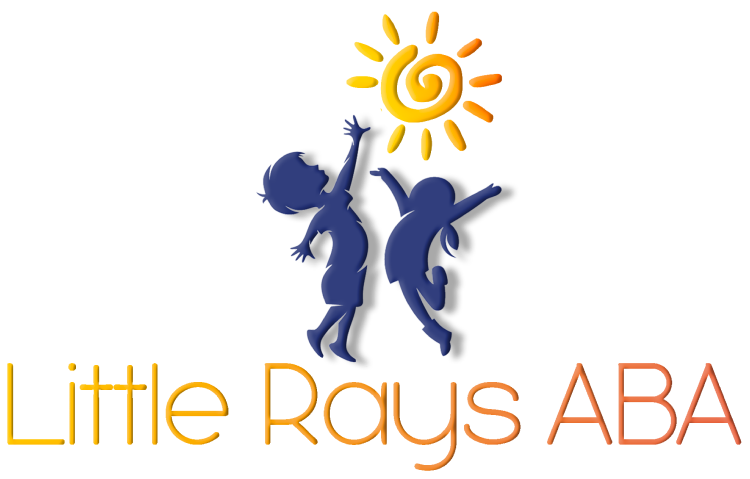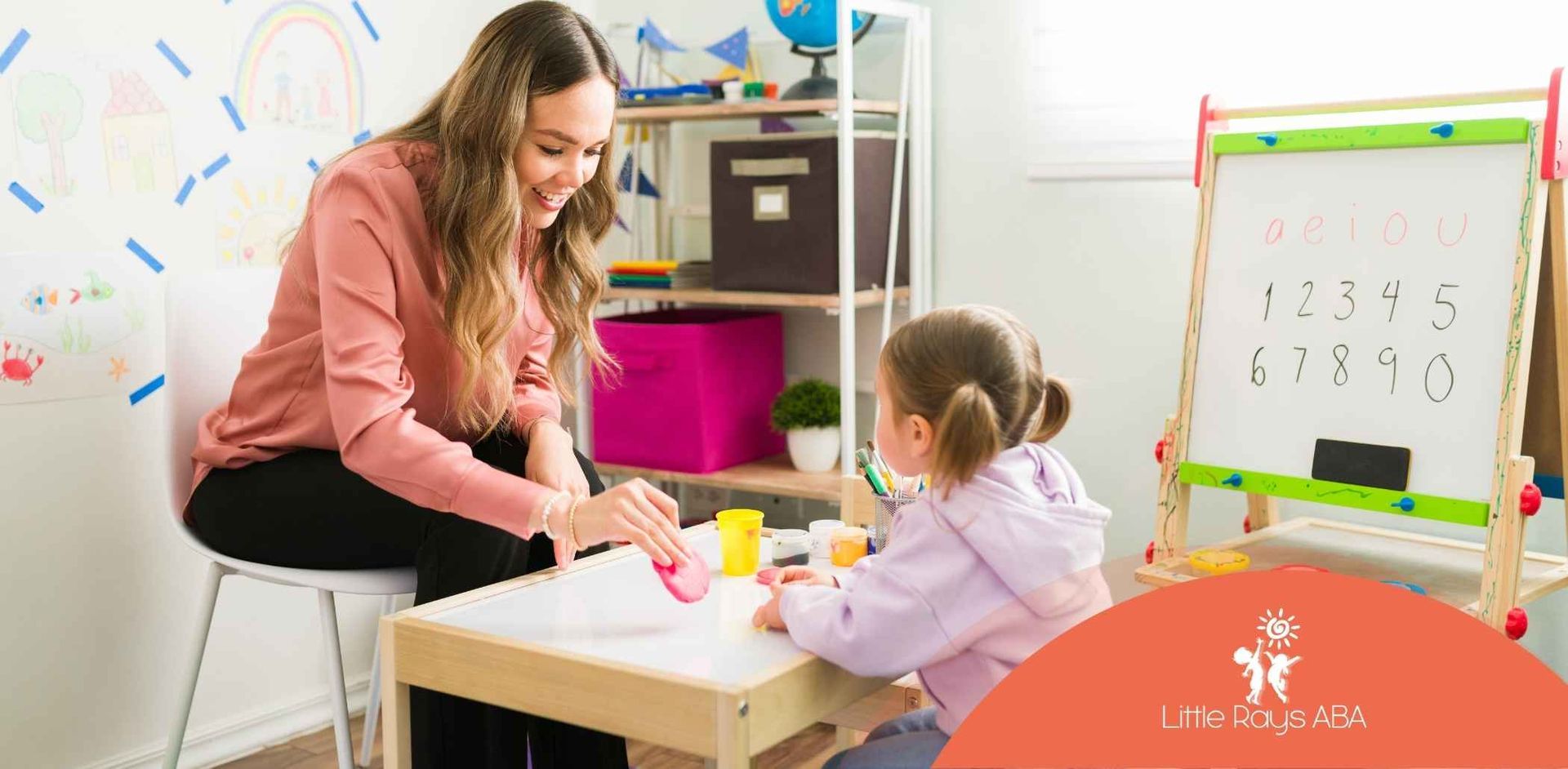
Understanding Rigid ABA: Key Strategies for Therapy Success
Applied Behavior Analysis (ABA) therapy is well known for how it helps people with autism spectrum disorder. The main idea is to find and change behavior patterns. This can help people to talk better, connect with others, and handle different situations. Typical ABA methods often follow strict routines. But, keeping everything the same all the time can sometimes stop people from being flexible and adjusting in new ways. If we look at what makes ABA feel too rigid, and what that means for behavior analysis, therapists and caregivers will have a better chance to find ways to make things work better. This approach can help each person on the autism spectrum meet their unique needs.
Defining Rigid ABA in the Context of Autism Therapy
Rigid ABA methods often use strict procedures and set ways to help autistic individuals. These methods stick to pre-made rules and sometimes forget each person needs something different. When there is strict adherence to rigid ABA, it can hold back skill generalization. This means people may not use what they learn in one place when they are in other real life or social situations. It is important to see when a method is too rigid in therapy. This helps everyone find a good balance between having clear plans and being able to change things for those with autism.
Next, let’s talk about how rigid ABA is different from traditional styles and look at the main parts of these strict protocols.
What Sets Rigid ABA Apart from Traditional Approaches
Rigid ABA stands out from other approaches because it uses strict routines and a lot of repetition. In the clinical settings, therapy sessions with this kind of structure often focus on getting people to follow directions at all costs, instead of helping them make real changes to how they act. This focus on rigid thinking and inflexible practices leaves little room for people to try new things. Some think that strict adherence always leads to success, but that may not be true for all.
Traditional ABA is different. It changes how it gives rewards based on the person’s individual needs over time. The more rigid types use one plan for everyone. If you leave out flexibility, things like skill generalization and learning to change in social situations get weaker. This makes it hard for people to do well in day-to-day life. The limited way of rigid ABA does not fit when someone needs help that is made only for them.
Given these challenges with inflexible thinking, people in the field must try to use new strategies. It is good to find ways to add greater flexibility while still using key parts of behavior support. This will help more people in therapy sessions, clinical settings, and in their efforts to make things better for every individual.
Common Features of Rigidity in ABA Programs
Rigid ABA programs often limit how much they can adapt. The focus is often on visual schedules and set ways to reward behavior. For example, in these programs, rigid protocols require people to react in the same way every time, without thinking about the situation or the person involved.
Structured routines you might see include:
- Rigid protocols that do not leave room to do things differently, so it can be hard to use them in real life.
- Strict schedules that put more value on things staying the same instead of being able to adjust day by day or during therapy tasks.
- Visual supports that stay the same each time, instead of changing when needed.
- Relying a lot on structured reinforcement, like token-based rewards, which can make things feel less natural.
These methods give a clear path for learning skills. But, if you stick to them too much, it can limit cognitive flexibility. For therapy to work better, using adaptive techniques can help people grow in different contexts.
Identifying Rigidity in Applied Behavior Analysis
Pinpointing rigidity in ABA therapy sessions means looking carefully at how the program is done. Sometimes, you can see rigidity when there are too many repetitive behaviors and not enough change in how rewards are given. By using diagnostic tools, the therapist can get a good idea about how the therapy is affecting the person's quality of life. These tools also help measure progress and find out what could be stopping someone from being more flexible.
When looking at structured processes in ABA therapy, therapists have to spot ways that block people from using new skills outside of the therapy. It is important to focus on each person's needs to get the best results that matter most. There are also signs that caregivers can look for during ABA sessions to see if rigidity or other problems are coming up.
How to Recognize Rigid Practices in ABA Sessions
Rigid practices in ABA can show up when a therapist keeps doing the same thing and does not change much during therapy. When a therapist always follows strict guidelines instead of looking at what the person needs, it often means their approach is too rigid. You can notice this when you see:
- Repetitive behaviors happen again and again with the same prompts, but without any changes for the situation.
- The plan uses strict adherence to rules and this makes it hard to connect with each person in a special way.
- There is limited reinforcement diversity. This means the person only gets artificial rewards and not enough natural reinforcers.
- It’s hard for the person to move from one thing or place to another, which shows the program is too rigid.
Using these strict ways can make it harder to help someone build social skills and interactions. If parents or therapists notice these signs of inflexibility, they can try to add open communication. This makes it more likely that the program will help with problems that show up in everyday life.
The Role of Strict Schedules and Protocols
Strict schedules are a big part of rigid ABA methods. Many see these as good for autistic individuals because they like things to stay the same. But when a therapy plan focuses only on strict adherence to routines and a lot of visual supports, it can make it hard to get ready for changes that often happen in real life.
Having a schedule that is always the same can help learning stay on track. Still, it can hold back kids when surprises come up. Depending too much on certain steps can put limits on what autistic individuals can do, making it tough for them to handle new situations. For example, if every ABA session follows the same tight plan, it may stop children from learning how to fix problems when the world changes.
To help with this, we can change things a little as time goes on during ABA sessions. Making small changes to routine pieces with empowered reinforcement can help grow better cognitive flexibility. This means kids can get used to new situations and use what they learn in different parts of their lives.
Effects of Rigid ABA on Children with Autism
For autistic individuals, therapy that is too strict can have strong effects. These methods can help at first and may make behavior better. However, they do not always show the child’s unique needs when checking progress. If the systems are too strict, it can be hard for a child to use new skills in social interactions or in everyday life. This can also make it harder for them to use what they learn in different everyday life settings.
When you look at these things, it shows that you have to balance the good sides of strict plans with the problems they may bring in being flexible. You need to ask how these choices will change thinking and social experiences for autistic individuals as they grow.
Potential Benefits and Drawbacks
Rigid ABA methods can give some good results, like getting tasks done right and repeating the right actions. They work by using positive reinforcement. But these methods can also cause problems. They often don’t recognize the need for flexibility or the skill to use what you learn in different situations.
One big problem is they can miss chances to add in personalized social skills training. For example, rigid methods use the same tasks over and over but do not help much with understanding feelings or how to solve problems. Also, they depend on giving things like tokens as rewards. This can stop people from learning in a natural way on their own.
To make things better, we can break up these strict plans. That helps support cognitive generalization. This way, you get the good outcomes while still being able to use the skills in different situations and be flexible.
Impact on Learning, Adaptation, and Social Skills
Rigid ABA strategies do not help much with building cognitive flexibility. This makes it hard for people to change and adjust. Children who stick to the same routines often find it tough to handle new social interactions or unexpected things around them. These strict routines also make it hard for them to try new things, be creative, or use what they know in other ways.
When you only use direct rewards to teach, kids miss the chance to build creativity and deal with everyday life changes. These strict rules can make it harder for them to handle mistakes or see things from someone else's point of view, especially when things do not go as planned.
Adaptive ABA can help. It mixes the basics of learning with ways to explore and try new things. This gives support to kids who have sensory issues so they can face life’s challenges better.
Using more flexible ABA methods is the way forward. With this shift, people get more chances for good social interactions and better use of cognitive flexibility. These methods can help everyone fit in better and do well in real life.
Comparing Rigid and Flexible ABA Techniques
There are big differences between rigid and flexible ABA sessions. Flexible ABA sessions use treatment plans that change based on different ways people learn. These plans do not get stuck in one method, so they work better for each person. Using intrinsic versatility means treatment plans can change and grow while a clinician helps guide them.
When moving from strict rules and reinforcement to a more broad and less strict model, autistic children usually get more help. If you compare the outcomes, you see more good changes for the child. This makes these treatment plans more active and adjustable. So, what good things will clinicians get from this approach, instead of being limited by using strict and fixed methods?
Advantages of Flexible Strategies
Using flexible strategies during therapy sessions helps autistic individuals in many ways. Cognitive flexibility lets people adapt more easily to everyday life. It makes it easier to deal with unexpected changes and social situations. When therapists use individualized approaches, they focus on each person's unique needs. This helps improve social skills and allows people to speak up for themselves more. Being flexible like this is good for executive functioning abilities. It also makes communication better. These changes help people be more engaged and take part more in therapy. For most, flexible strategies lead to a more positive experience and help them feel stronger and more in control.
Case Examples: Rigid vs. Flexible Responses
Rigid responses can miss the details of an autistic person's needs. This may make them feel stress when there are unexpected changes. For example, if a child's schedule changes and they have to do a new activity, the child might get anxious.
On the other hand, using flexible strategies helps in different situations. A child who is used to visual supports can get help if the routine is changed to include social skills training. This can build cognitive flexibility and help them handle different social situations better. Using this way supports the child to learn and react well when things do not go as planned.
Core Strategies Used in Rigid ABA Therapy
In rigid ABA therapy, there is a big focus on keeping things clear and predictable. One important part of this is discrete trial training. With this, skills get broken down into smaller tasks, and there is steady support for doing the right things. Repeating these tasks over and over helps people remember them well. It also helps with social skills and working through problems with others.
Using visual supports like schedules is very useful for people on the autism spectrum in their everyday life. These tools help everyone follow tasks each day and face things tied to autism spectrum disorder. Keeping a set structure gives autistic individuals a feeling of safety and helps them deal with rigid thinking and trouble with things that are not certain. With a steady way of doing things, there is more stableness for them when life gets hard or builds up stress from change.
Discrete Trial Training and Structured Reinforcement
Discrete trial training (DTT) is a key part of ABA therapy that helps people learn in a very clear and organized way. In this method, the teacher gives instructions step by step and gives instant feedback after each step. This helps people learn new skills and use them in everyday life. DTT uses visual schedules and other tools to show what to do, so good actions get quick rewards. This helps grow cognitive flexibility and lowers rigid habits.
By making things happen in a way that you can expect what will come next, DTT can help autistic individuals get better social skills. These steps make it easier for them to talk and play with other people in different places. DTT supports their unique needs, giving them real help in therapy sessions and letting them use new skills in daily situations.
Emphasis on Repetition and Predictability
Structured repetition during therapy sessions has a big impact on improving cognitive flexibility for autistic individuals. Having predictable routines can help lower anxiety that may come from unexpected changes. This gives a sense of security. When you focus on set patterns, it supports skill generalization to different contexts. This helps with the development of social skills. These stable routines give a solid base for therapists to use behavior analysis methods well. When these plans are used, therapy sessions turn into a supportive environment where autistic children can grow, adjust to everyday life, and meet their unique needs.
Moving Toward More Adaptive ABA Practices
Creating a supportive environment for autistic individuals means being flexible with ABA practices. Therapists need to keep checking and changing their methods to fit the unique needs of each person. Using things like social stories and visual supports can help everyone understand better, especially when there are unexpected changes. These tools also help build cognitive flexibility. When therapists learn to work with the ups and downs of real life, people can get better at using new skills in different places. This way, social interactions and daily life become easier. It helps autistic individuals feel stronger and ready for success in many parts of life.
Incorporating Flexibility Into Therapy Sessions
Changing therapy sessions to allow more flexibility helps autistic individuals take part and learn more. When professionals use many different ABA techniques, they can meet the unique needs of each child in a good way. This helps build cognitive flexibility. The shift makes it easy to adjust during the therapy sessions, so the child gets a supportive environment that understands their feelings and needs.
This way, children get better at social skills, and they can use what they learn in different contexts of everyday life. It helps them keep growing, build new adaptive behaviors, and be ready for unexpected events that come up in everyday life.
Tailoring Interventions for Individual Needs
Creating personal plans is important when you want to help autistic individuals. Using ABA techniques that fit their unique needs helps build cognitive flexibility. It also supports skill generalization in different situations. If you look at the different facets of rigidity in each person, you can use tools like visual schedules and social stories to lower anxiety. This way helps autistic children feel more confident and strong. It also makes open communication a key part of therapy sessions. With therapies that change and grow in light of new information and unexpected changes, every session stays useful and rewarding for them.
Conclusion
Putting focus on changing rigid ABA practices is very important. It gives a chance to make the quality of life better for autistic individuals. If you add flexibility in therapy sessions, you can help with the unique needs of each child. When ABA techniques become less rigid, kids can develop better social skills and more cognitive flexibility.
This way does not just help with joining in more. It also lets autistic children feel stronger when they deal with new and different social situations. In the end, choosing to keep changing ABA techniques can mean therapy works better. It can fit everyday life and what people really go through. This is how you let autistic individuals get the most from their therapy and have a better day-to-day life.
At Little Rays ABA, we know that rigid ABA methods don’t work for every child. As the best ABA provider in Florida, we focus on flexible, child-centered strategies that adapt to individual needs without losing structure. Our team balances consistency with creativity—so therapy stays effective, but never robotic. Looking for an approach that grows with your child? Reach out to Little Rays ABA and let’s build progress that feels right.
Frequently Asked Questions
What is considered a rigid component in ABA therapy?
In ABA therapy, a rigid part usually means using set ways of doing things or answers that do not change. These methods stick to the same steps each time, with a lot of structure and repeating actions. This plan can help manage behaviors, but it may not fit everyone. It can make it hard to change things for each person’s unique needs or situations.
How can caregivers identify rigidity in their child’s ABA program?
Caregivers can spot when there is rigidity in their child's ABA program. They may see the child not responding well to any changes. The program may not have steps made just for their child. There may also be too much focus on doing the same things again and again. If you notice these problems, it means the program may not be meeting your child's unique needs. It is a sign to look for better ways that work for them.
Are there proven benefits to a less rigid, more flexible ABA approach?
Yes, using a less strict and more open ABA approach can help people join in more, feel better about the work, and meet each person’s needs. When you shape the way you work for each person and each situation, you may see more success. This can also help everyone have a better and more positive time in therapy.
How do rigid ABA strategies affect long-term outcomes?
Using strict ABA strategies can help people learn skills and respond in the same way each time. This is good for building habits, but it may make it hard for someone to be flexible. Over time, it can be tough to use those skills in new places or with other people. This means the approach may not work as well when trying to meet individual needs. It can also affect how people reach real and important changes from therapy that last for a long time.
Sources:
- https://app.pulsar.uba.ar/fetch.php/virtual-library/T67747/WhatIsOneComponentOfRigidAba.pdf
- https://pubmed.ncbi.nlm.nih.gov/18211658/
- https://www.behavior-analysis.org/
- https://pmc.ncbi.nlm.nih.gov/articles/PMC4629512/
- https://onlinelibrary.wiley.com/doi/10.1155/2021/5300189
- https://pmc.ncbi.nlm.nih.gov/articles/PMC5414037/
- https://www.autismspeaks.org/expert-opinion/what-discrete-trial-training
Related Posts





